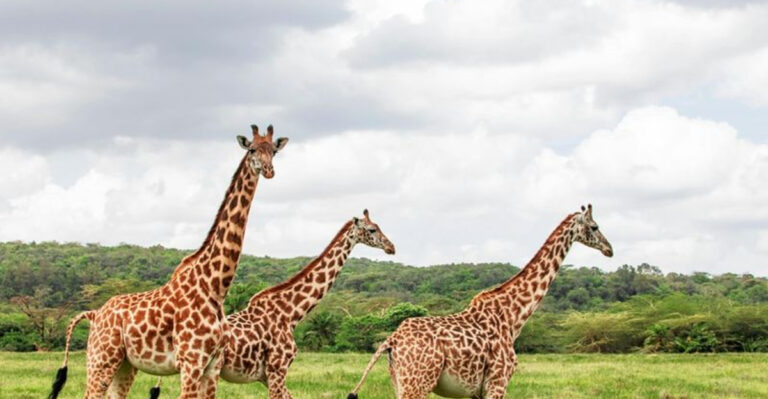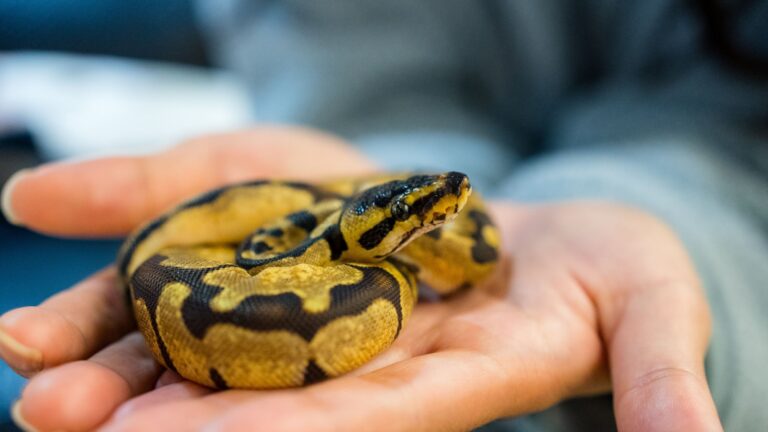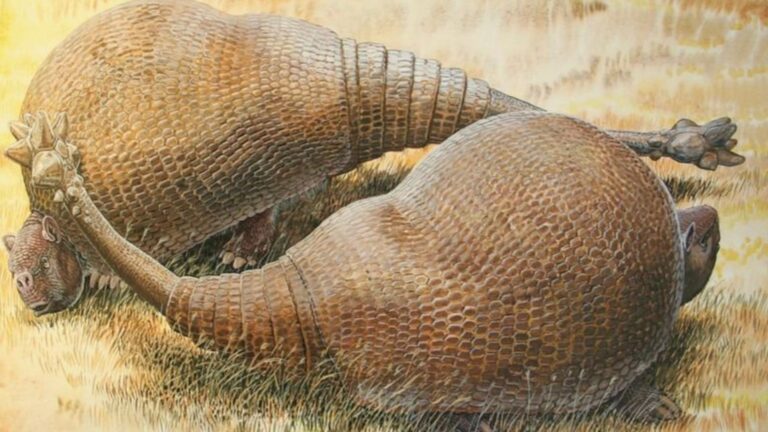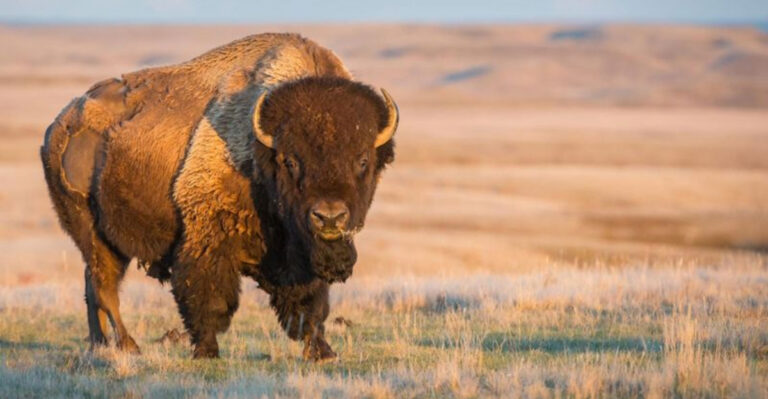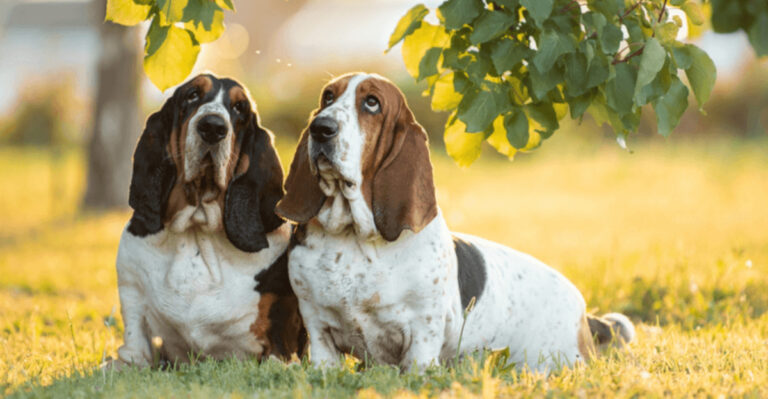15 Behaviors That Reveal Anxiety In Horses
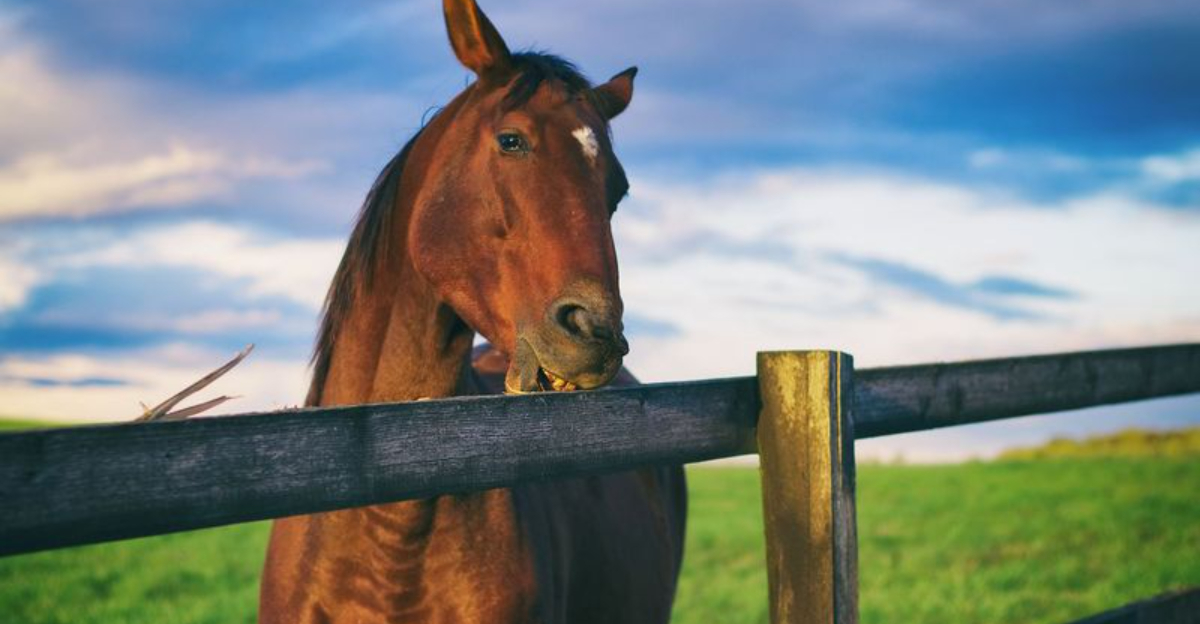
Ever watched a horse and wondered what’s going on in their head? Just like humans, horses experience anxiety too! Recognizing the signs early can help you address their stress before it escalates into bigger problems.
These telltale behaviors might indicate your equine friend is feeling anxious or uncomfortable.
1. Excessive Pawing At The Ground
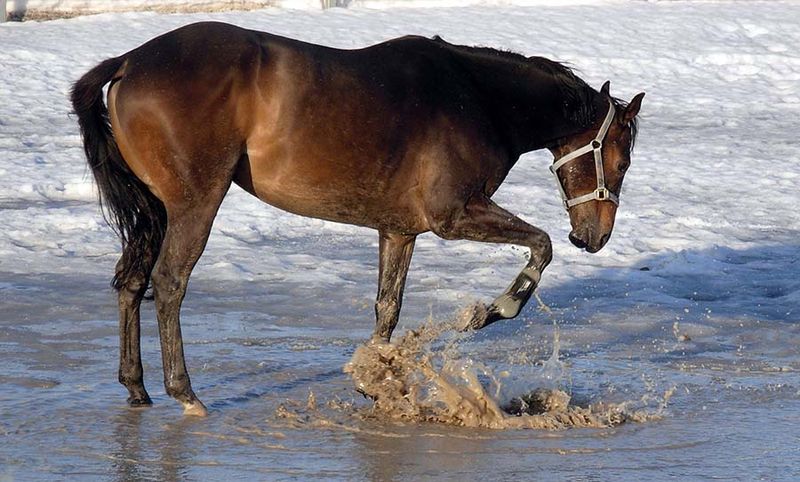
When stress bubbles up inside, horses often take it out on the dirt beneath them. This repetitive scraping isn’t just boredom – it’s their way of releasing nervous energy.
Think of it as nail-biting for horses! If your horse starts digging trenches while tied up or in their stall, they’re likely feeling uneasy about something in their environment.
2. Tail Swishing Without Flies
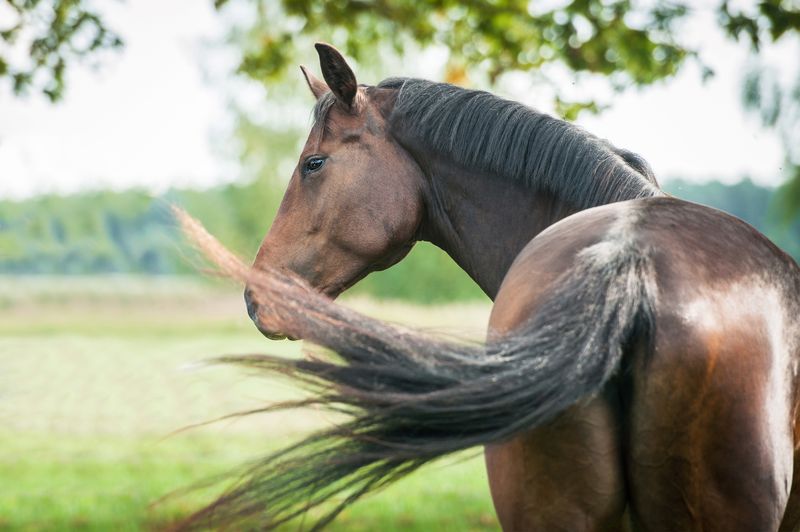
That rhythmic tail swooshing might look elegant, but when there’s not a fly in sight, something else is bugging your horse. Rapid or continuous tail swishing signals irritation or nervousness.
Pay special attention if this happens during handling or riding. Your horse is literally waving a red flag saying, “I’m uncomfortable with what’s happening right now!”
3. Box-Walking Or Stall Pacing
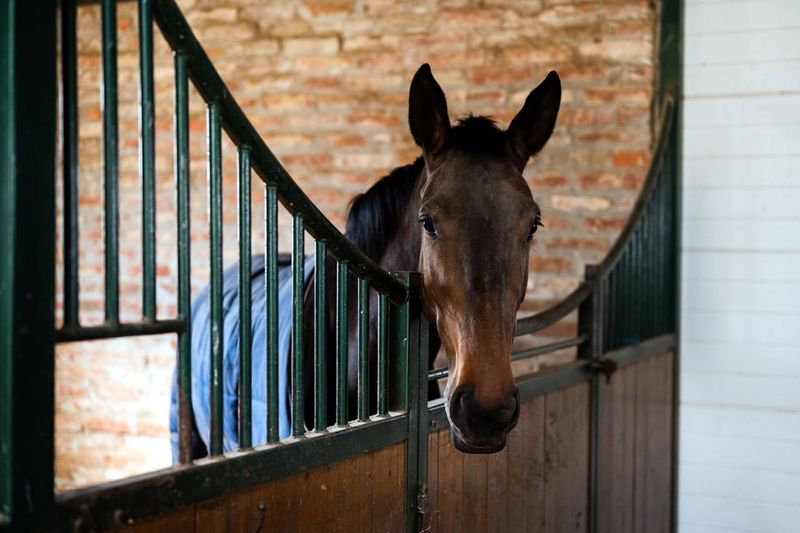
Found your horse walking circles in their stall? This repetitive movement pattern screams anxiety. Horses developed as roaming animals, and confinement can trigger this neurotic behavior.
The well-worn path along the stall perimeter tells the story of a worried mind. Similar to humans pacing when stressed, this behavior indicates your horse might be feeling trapped or frustrated.
4. Weaving Side To Side
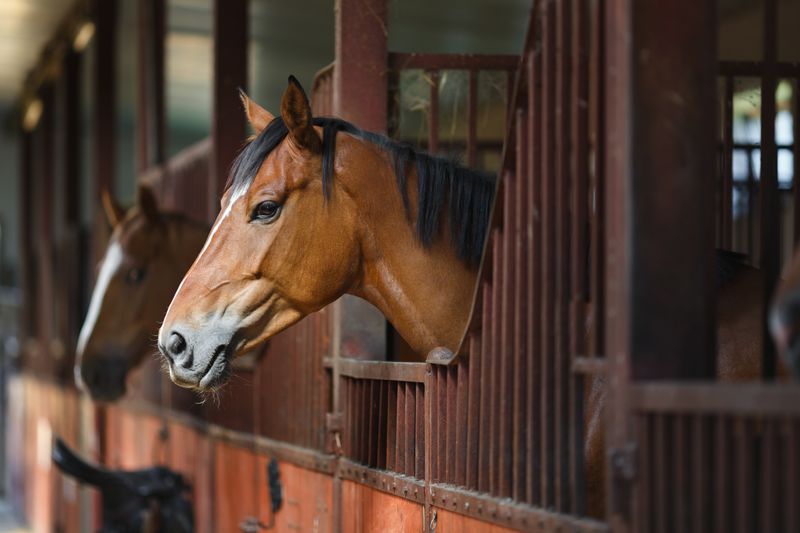
Watch for that hypnotic rocking motion where your horse shifts weight from one front leg to the other. This rhythmic swaying, often accompanied by head bobbing, is a classic anxiety response.
Commonly seen in stabled horses, weaving develops from social isolation or confinement frustration. The motion releases endorphins, making it an addictive self-soothing technique that’s tough to break once established.
5. Frequent Lip Licking Or Chewing
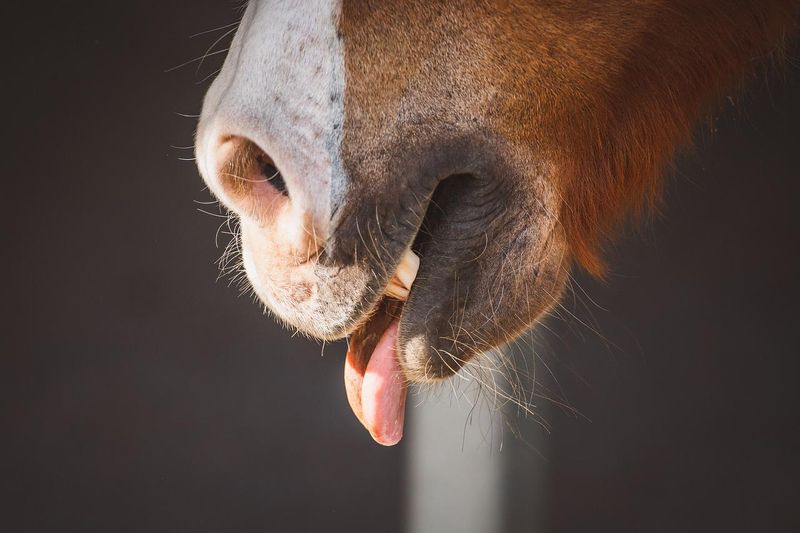
Those exaggerated mouth movements might look cute, but they’re actually stress signals! Horses lick their lips and make chewing motions when they’re processing pressure or anxiety.
Natural horsemanship fans call this “thinking” or “processing,” but excessive lip movements usually indicate your horse is trying to self-soothe. It’s their version of deep breathing exercises during uncomfortable situations.
6. Teeth Grinding When Not Eating
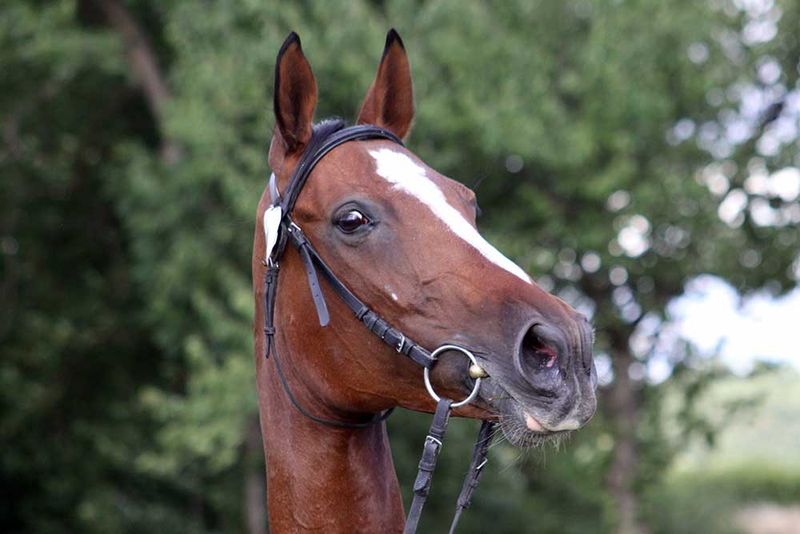
That unmistakable grinding sound outside of mealtime spells trouble. Bruxism—the fancy term for teeth grinding – signals discomfort, pain, or anxiety in horses.
The rhythmic side-to-side jaw movement creates a distinctive crunching noise that experienced horse owners recognize immediately. While occasional grinding happens, persistent grinding warrants investigation into possible physical pain or emotional stress triggers.
7. Flared Nostrils And Rapid Breathing
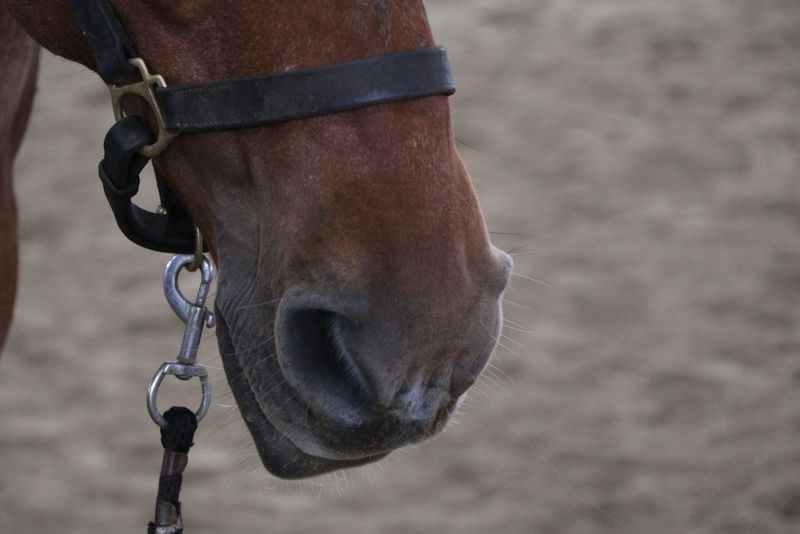
Those wide-open nostrils aren’t just for show! When your horse’s breathing quickens and nostrils flare without physical exertion, they’re experiencing the equine version of hyperventilation.
This fight-or-flight response pumps extra oxygen into their bloodstream, preparing for potential danger. Combined with an elevated heart rate, these respiratory changes reveal your horse is on high alert from perceived threats.
8. Wood Chewing Or Cribbing
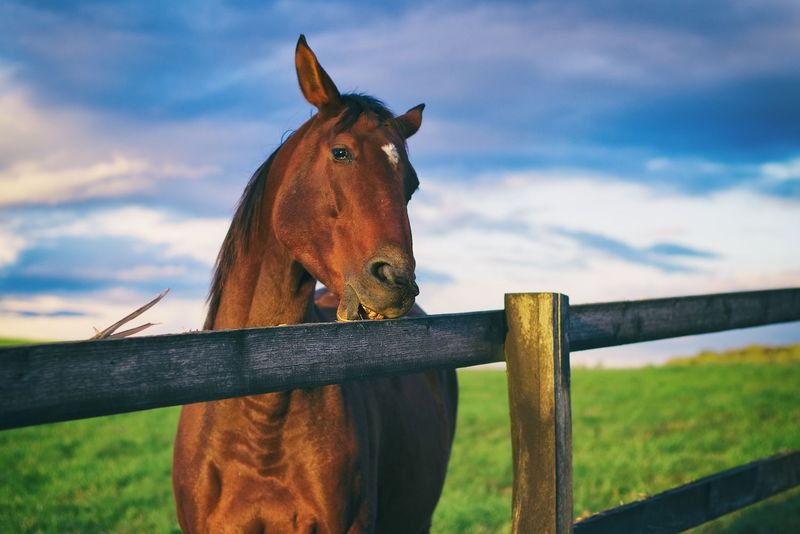
Teeth marks along fence lines and stall doors aren’t just property damage – they’re distress signals! Wood chewing and cribbing (where horses grab surfaces with teeth while sucking air) develop from boredom and anxiety.
These destructive habits release feel-good endorphins, making them addictive coping mechanisms. Like stress eating in humans, these behaviors temporarily soothe anxiety but indicate underlying welfare issues that need addressing.
9. Excessive Sweating Without Exercise
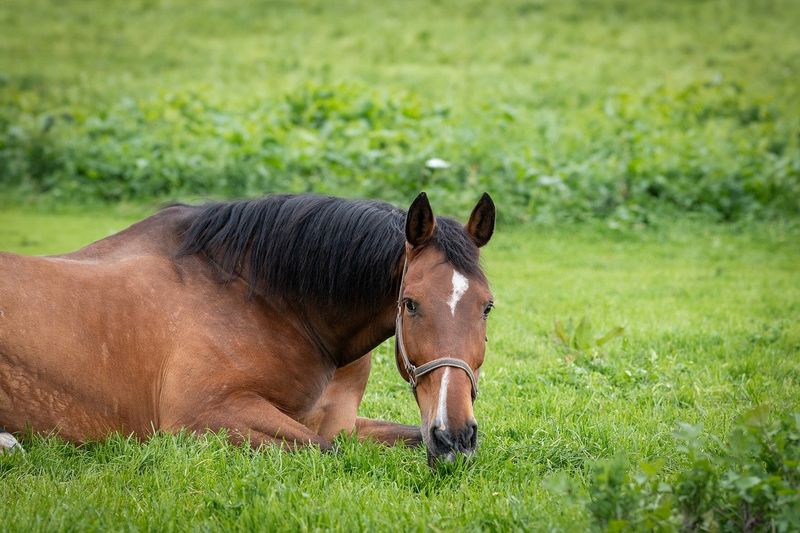
Sudden dampness appearing on your horse’s neck and flanks without physical exertion? That’s stress sweat! Anxiety triggers the same physiological responses as exercise, including increased body temperature and sweating.
This nervous sweating often appears in patches rather than evenly across the body. Pay special attention to sweating combined with trembling – it’s a clear sign your horse is experiencing significant distress.
10. Persistent Head Tossing Or Shaking
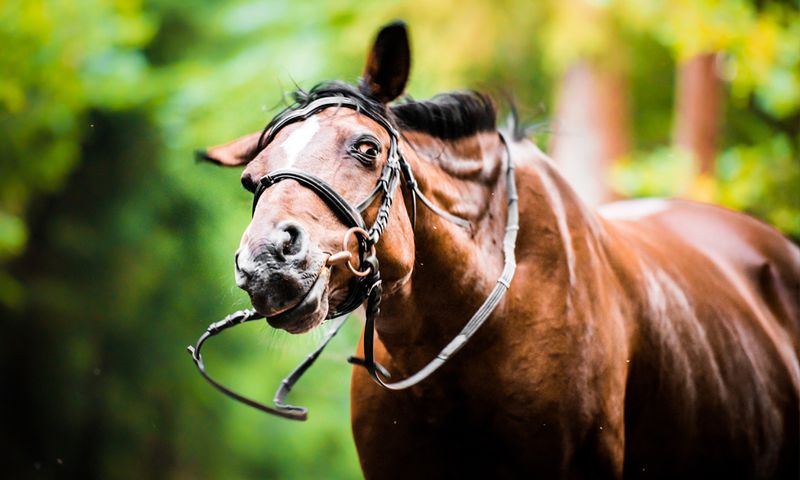
That dramatic head flinging isn’t just attitude! When horses repeatedly toss or shake their heads without obvious irritants like flies, they’re expressing frustration or anxiety.
While sometimes related to physical discomfort from ill-fitting tack, persistent head movements often signal mental distress. The behavior can become habitual – a self-soothing ritual that helps them cope with ongoing stress.
11. Refusing Food Or Unusual Eating Patterns
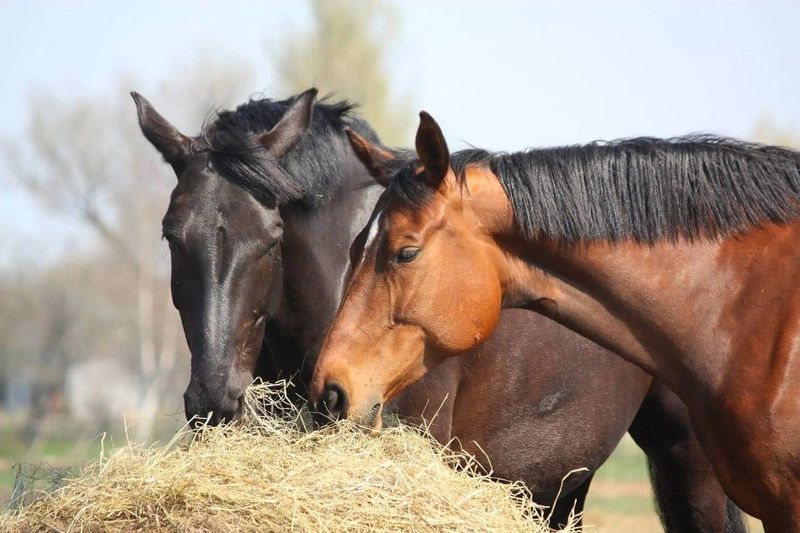
When a normally food-motivated horse turns down treats or meals, something’s definitely wrong! Anxiety often manifests as appetite changes in horses, just like in people.
Some anxious horses stop eating entirely, while others develop strange habits like food guarding or bolting their feed. These disrupted eating patterns serve as early warning signs before more obvious stress behaviors appear.
12. Excessive Yawning In Stressful Situations
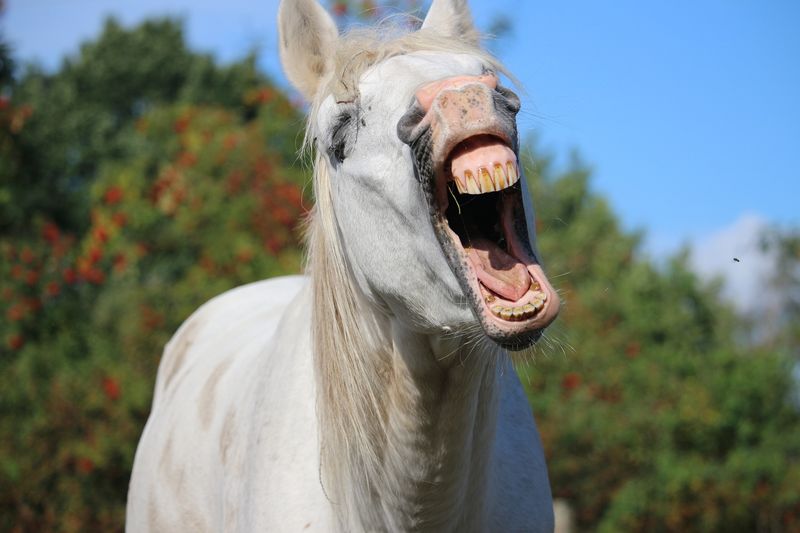
Those big, dramatic yawns during training or new situations aren’t about sleepiness! Frequent yawning in horses often indicates tension release, not tiredness.
When pressure builds, horses yawn to self-regulate and reduce stress. It’s their body’s way of hitting the reset button. Multiple yawns in quick succession typically signal your horse is processing something challenging.
13. Wall-Kicking Or Stall-Banging
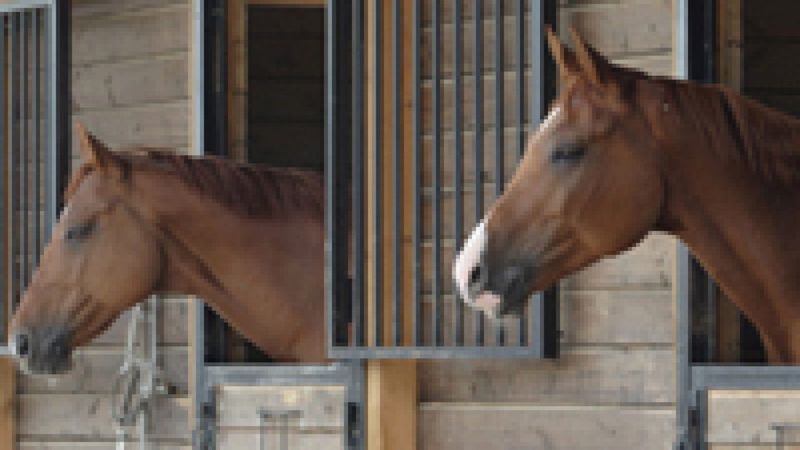
That rhythmic thudding from the barn isn’t a drum solo – it’s anxiety in action! Frustrated horses often kick walls or bang stall doors, especially around feeding time or when separated from companions.
This noisy behavior communicates intense emotional distress. While sometimes mistaken for simple impatience, persistent banging reveals deeper unmet needs. The behavior can become habit-forming and lead to leg injuries if not addressed.
14. Constant Vigilance And Spooking
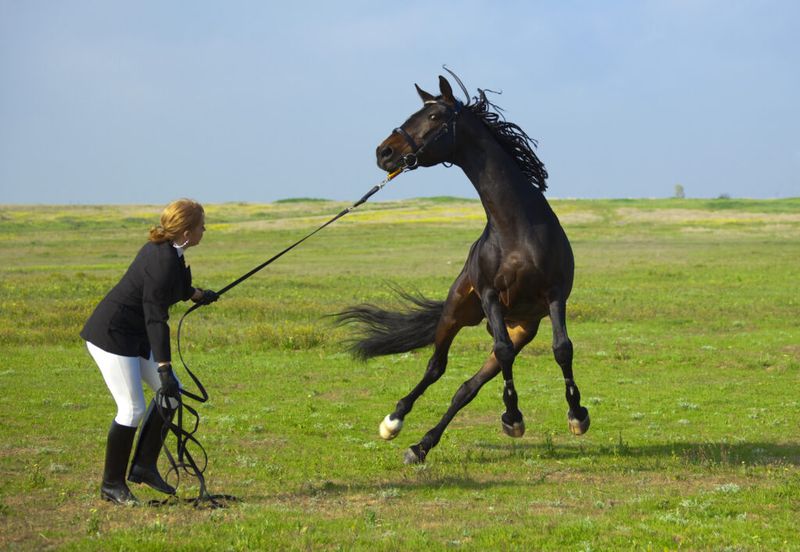
That horse who jumps at shadows isn’t being dramatic – their nervous system is stuck in high gear! Hypervigilant horses constantly scan their environment for dangers, real or imagined.
The constantly swiveling ears, wide eyes, and exaggerated startle responses reveal an anxious mind that can’t relax. This heightened state of alertness exhausts horses mentally and physically, making them more reactive to normal stimuli.
15. Trembling Or Muscle Twitching
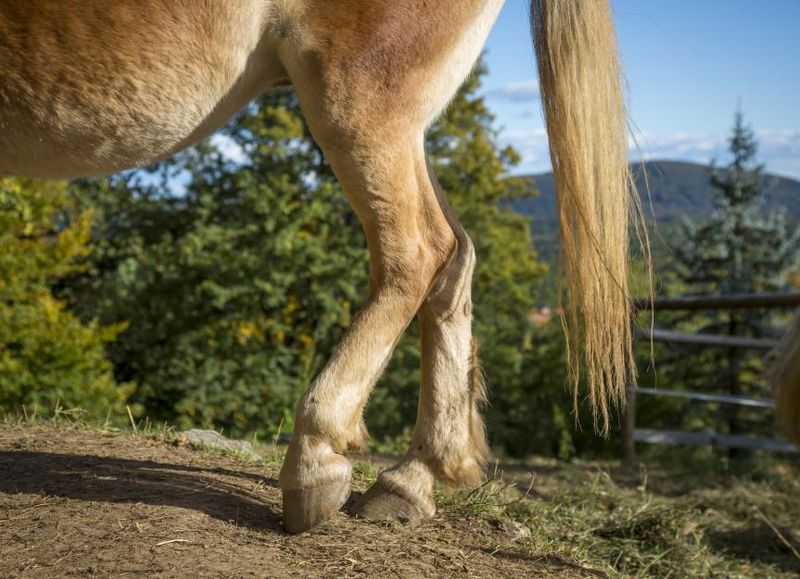
Those subtle muscle tremors aren’t always about temperature! Anxiety makes horses shake just like it does humans. Look for fine trembling along the neck, shoulders, or flanks during stressful situations.
This involuntary response happens when stress hormones flood their system. While occasional twitching is normal, persistent trembling signals your horse is experiencing significant emotional distress that requires immediate attention and environmental changes.

